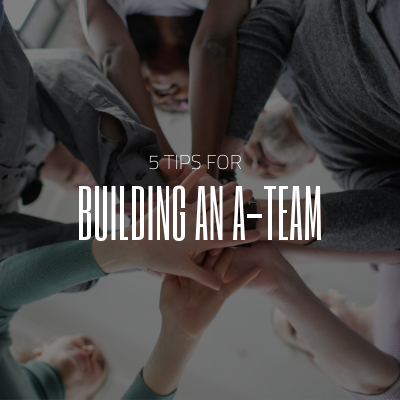“A team is only as strong as its weakest link.”
It’s a statement we’ve all heard before. But it’s something that rings true, especially in the civil engineering industry.
Individuals have their own set of talents and skills that they bring to the table. In the end, though, it’s teamwork that is at the heart of any operation. It not only cultivates a healthy work environment, it also motivates employees to work harder and smarter, propelling a team to success.
Success comes from several elements working together. It’s more than simply having the right people. Here are five tips for building an A-team:
The Power of Influence
When creating a dynamic team, good leadership is key to success. With more companies implementing flatter management structures, this can be a challenge for those chosen to head projects. The “I lead, you follow” approach is ineffective. True leadership comes from influence, even if you don’t have the positional power.
Carol Martsolf, vice president and director of training at Urban Engineers, discusses how you can exert influence without formal authority.
Mistake-Proof Your Team
The civil engineering profession is built on perfection. But civil engineers are human, and humans make mistakes. In improving your team, you should not expect perfection. If you do, you’ll likely be disappointed. There may be bumps in the road and unforeseen obstacles along the way. Instead, focus on making sure your team can effectively handle mistakes and grow from them.
Michael Howell, president of Arrow Engineering, discusses how to create a failure-resistant team.
Emphasize Trust and Support
The civil engineering community is constantly working to increase interest in STEM fields. K-12 and university outreach helps by providing a solid foundation of support. But what happens to that support, especially for female engineers, once they enter the industry?
Forty percent of women with engineering degrees drop out or never enter the workforce. For those who do enter the field, one in four leave after age 30. So what can you do to change this? It all comes down to trust and support. The success of a team depends on how each person accepts different viewpoints and ideas.
Stephanie Slocum, founder and CEO of Engineers Rising LLC, discusses the state of women in civil engineering and how teams can work to close gender gaps in the profession.
Actions Speak Louder Than Words
Studies show that 80 to 95 percent of one-on-one communication is nonverbal. That means in an effective work environment, what we don’t say matters just as much as what we do say. It begins with first impressions and seeps into every aspect of team messaging and collaboration.
Brock Barry, an associate professor at the U.S. Military Academy, discusses why nonverbal communication is a vital element in engineering workplaces.
Share the Story of Civil Engineering
Civil engineers have a critical role in shaping society. Over time, their stories have been told through the world they have built. But engineers have a much bigger narrative to share with the cities they’ve helped to create. Public relations is crucial for the success of engineering firms. It helps the community to understand the importance of civil engineers and how their projects can benefit society as a whole.
Robert Deigh, principal of RDC Public Relations LLC and author of “Spark: The Complete Public Relations Guide for Small Business,” discusses the value of public relations to engineering firms and how to harness its power.


